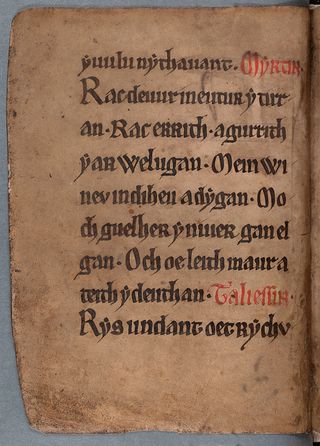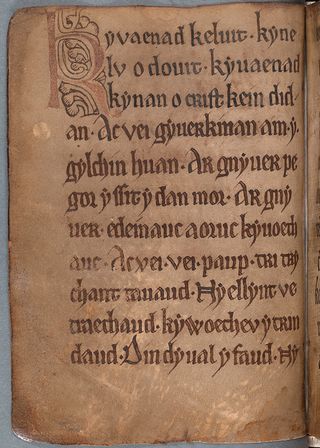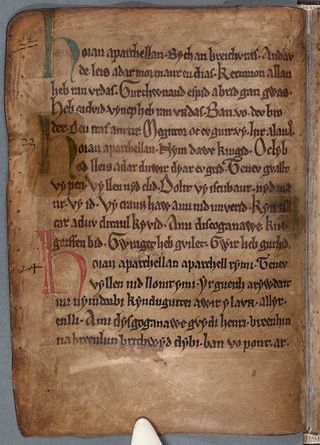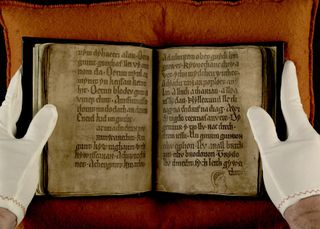In Photos: Medieval Manuscript Reveals Ghostly Faces
A 750-year-old medieval manuscript, the oldest surviving medieval text written solely in Welsh, has revealed even more intrigue, as researchers have uncovered once-hidden ghostly faces and text on the vellum pages. Here's a look at some of the pages of "The Black Book of Carmarthen" and the newly revealed passages. Images are courtesy of the National Library of Wales. [Read the full story on the medieval manuscript]
Hidden secrets

The faces found by Myriah Williams and Paul Russell of the University of Cambridge are visible under UV light, but not to the naked eye. "The margins of manuscripts often contain medieval and early modern reactions to the text, and these can cast light on what our ancestors thought about what they were reading," Williams said in a statement. "The 'Black Book' was particularly heavily annotated before the end of the 16th century."
Ancient pages

One of the 54 pages from "The Black Book of Carmarthen," which is at the National Library of Wales. A scribe collected various poems and versus over his lifetime, the researchers said. In this compilation are some of the earliest references to Arthur and Merlin, including a dialog between Arthur and Welsh poet Taliesin (the first poem of.
What's in a name?

Illustrating a lifetime collection, the book takes on different styles of font, beginning with large, wide script written on alternating ruled lines of vellum and later pages filled with much smaller lettering and lines that are bunched much closer together.
Sign up for the Live Science daily newsletter now
Get the world’s most fascinating discoveries delivered straight to your inbox.
Favorite dog?

Williams' favorite page is 49r (shown here), "because it provides a decent case study in itself for a lot of the different features of the manuscript as a whole. A variety of styles and layouts are found on this page, as well as an example of the Black Book scribe's own habit for collecting in the margins and adding to texts," Williams said. "It also contains a fantastic stylized image of a dog, possibly a greyhound. I am also fond of the central poem of this page, a short series of verses cursing a goose for pulling out the eye of Gwallawg, the figure after whom the poem has been named by scholars."
Close up look

Pages from the Black Book of Carmarthen in visible light.
More pages

More pages from the Black Book of Carmarthen.
A small book

The founder of the National Library of Wales, Sir John Williams, bought the Black Book, which measures 6.7 by 5 inches (17 by 12.5 centimeters), in 1904. Its 54 pages are made from vellum, or animal hide.
Ghostly specters

When examined using a combination of UV light and photo-editing software, some pages of the book revealed ghostly faces and text that had been added to the book in the 13th through 15th centuries. Particularly, the researchers found ghostly faces with an accompanying line of verse on one of the pages.
A pinkish tint

Here, the ghostly faces on the pages of the Black Book are visible under different parts of the light spectrum.
Follow Jeanna Bryner on Twitter and Google+. Follow us @livescience, Facebook & Google+.
Jeanna Bryner is managing editor of Scientific American. Previously she was editor in chief of Live Science and, prior to that, an editor at Scholastic's Science World magazine. Bryner has an English degree from Salisbury University, a master's degree in biogeochemistry and environmental sciences from the University of Maryland and a graduate science journalism degree from New York University. She has worked as a biologist in Florida, where she monitored wetlands and did field surveys for endangered species, including the gorgeous Florida Scrub Jay. She also received an ocean sciences journalism fellowship from the Woods Hole Oceanographic Institution. She is a firm believer that science is for everyone and that just about everything can be viewed through the lens of science.
Most Popular


